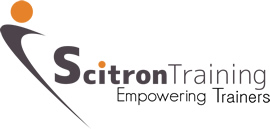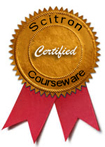This article is intended both for those new to business writing in general and in particular to report writing and for experienced report writers who wish to review their own methods.
Definition of good report writing
A good report should be readable, interesting and well presented, and it should be no longer than is necessary. It keeps the needs of the readership clearly in mind. As the readers are likely to be busy people who already have a problem reading the material that passes through their hands, a verbose and lengthy document is unlikely to be welcome. A good structure, with clear conclusions and a summary, is vital if an acceptable document is to be produced.
Advantages of good report writing
- Helps you to communicate more effectively
- Improves your status and your career prospects
- Contributes to business success by improving communication
- Creates a good corporate image of the organisation
- Greatly assists the process of planning, creative problem solving and decision making
Disadvantages of poor report writing
- Time is wasted as readers search for the information they require
- Readers are frustrated because the information provided is incomplete
- Misunderstandings result from the lack of clarity in the language used
- A lack of confidence is felt in both the writer and the message they are trying to put across
- The report is not read at all
Action checklist for professional report writing
1. Preparation
Putting pen to paper (or fingers to keyboard) is not the way to start the report writing process. You have to plan what you are going to produce if you want to produce an effective document. In preparing for the actual writing process you should:
- consider the terms of reference and objectives. They should define why the report is needed, the type of report it should be, the scope of the subject that is to be covered, and the time scale
- identify the readership. Is the person who requested the report the primary reader? Who else will see the report? What can the readers be
- expected to know about the subject? What do they need to know about the subject?
- establish the objectives in your own terms. Present as results to be achieved rather than intentions
2. Gather and collate the information
With most reports you will not have all the information needed to hand so some form of research or data collection will be required. This may entail identifying and reading other reports, interviewing people, carrying out primary research or drawing together data from a number of different locations. Gathering too much information is not a bad fault gathering too little definitely is - but bear in mind what you want the information for, otherwise you can bury yourself in a mound of data. Reports are far easier to write when you are able to choose from the information immediately to hand. The important thing is to gain a balanced picture of the subject.
3. Structure your report before writing
Analyse the information to identify that which is most important and that which provides supporting evidence. To achieve this you need to refer back to your terms of reference and your readership. With long documents a detailed outline will be needed. This should link the main subjects with the topics they cover. Consider the order in which you are presenting the information are you presenting it with impact? Restructure them if the order does not seem logical and it fails to portray the message you want.
Plan the layout of your report following the house style of your organisation if applicable. A simple framework for a format can form the basis of most reports. This should include:
- Introduction (to include terms of reference and the methodology)
- Summary
- Main report
- Conclusions
- Recommendations
- Supplementary evidence (including full tables and figures which would obstruct the reading of the main report)
4. Write the report
View your first attempt at putting the report together as a draft. Your plan will provide a broad picture of what you want to achieve. By writing in a single sitting you are far more likely to retain your original concept. Setting yourself a deadline can help to focus the mind.
Make your writing as persuasive as possible by:
- keeping your message simple without oversimplifying
- writing positively, as negative statements are not so easy to understand
- using the active voice, as it is easier to understand than the passive
- including only the information the reader needs to know
- avoiding long and complex sentences, especially those with several subordinate clauses
- using long words only when they are appropriate
- using short words and phrases for conciseness and clarity
- employing technical terms only where they are unavoidable or where you are sure that your audience will understand them. A glossary may be required to assist your readers
Graphics and visuals are invaluable for expressing complex information. The forms available include tables, line graphs, bar graphs, divided bar graphs, pie charts, pictographs and illustrations; figures are generally to be preferred to tables of data. They should be formatted with care, clearly numbered and titled and introduced within the text.
If the graphic is included to help explain a key point it should be placed as close to that point as possible. If it is supplied for documentary support it can be placed at the end of the report. It is often useful to include a simplified or summary figure or table in the main report and to relegate detailed data to an appendix.
5. Review what you have written
You should always allow time to review what you have written, but this should not be done as soon as you have finished writing. Starting the revision a day or two after can be more effective as the ideas are still clear in your mind, but you are fresher to analyse critically what you have written and can view it with more perspective. You will often find simpler and shorter ways of saying what you intend.
Consider whether the report says what you want it to say. Does it fully cover the terms of reference? Analyse the readability of the report, making use of such techniques as Gunning's Fog Index. Check the structure of the report. Check spelling, punctuation and grammatical correctness.
Do your conclusions sufficiently differentiate between those drawn from information presented in the report, your own personal comments and recommendations as to future action based on the report findings?
Ask a colleague to proof-read the report and to consider issues such as ease of understanding and structure.
6. Printing and submission
House style may dictate how your report should be printed and should be followed. For guidance the layout should allow generous margins and make use of a readable typeface. For longer reports starting each section on a new page is advisable.
Aim to submit your report ahead of schedule.
Dos and don'ts for report writing
Do
- Express clearly and concisely what you have to say
- Provide a summary of the main issues and conclusions
- Be complete
- Write with a clear idea of your readership
- Write with a clear idea of what you are aiming to achieve
Don't
- Write to impress
- Include information only because you have found it




















